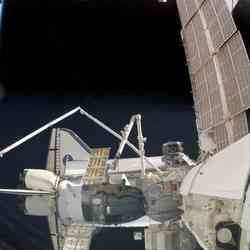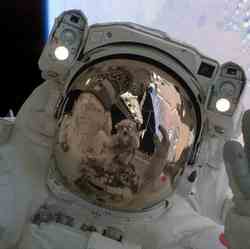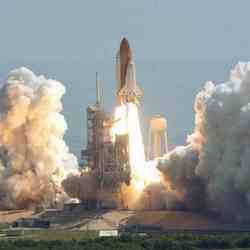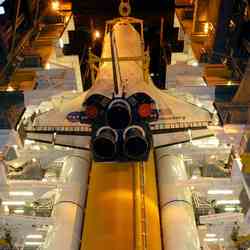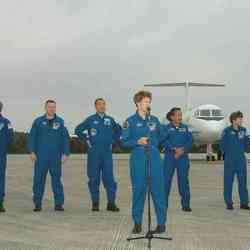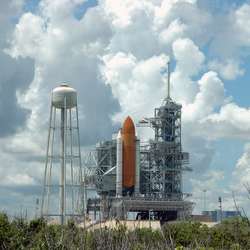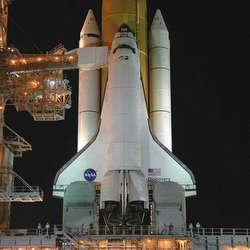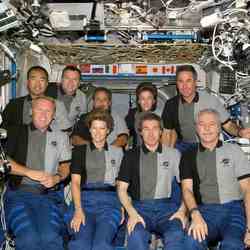
The Expedition 11 and STS-114 crewmembers. Image credit: NASA Click to enlarge
Despite days of anticipation and intense planning, space-walking astronaut Steve Robinson made it look easy as he gently pulled two protruding gap fillers from between thermal protection tiles on Discovery’s underside Wednesday morning.
“It looks like this big patient is cured,” Robinson told delighted flight controllers.
Fellow spacewalker Soichi Noguchi of the Japan Aerospace Exploration Agency helped Robinson with preparations, and from a perch near the end of a Space Station truss acted as observer and communication relay station between Robinson and astronaut Andy Thomas aboard Discovery. Thomas was the onboard coach and monitor for Robinson and Noguchi throughout the 6-hour 1-minute spacewalk. Discovery Pilot Jim Kelly and Mission Specialist Wendy Lawrence operated the Station’s Canadarm2, which moved Robinson to and from the worksite. Today’s spacewalk, the third of the mission, began at 3:48 a.m. CDT and concluded at 9:49 a.m.
Deputy Space Shuttle Program Manager Wayne Hale, in Wednesday?s afternoon briefing, said ?The crew demonstrated consummate professionalism and coolness beyond belief. They [the gap fillers] came out just as we thought they would. It looked easy but was not, which is a tribute to the crew and the team on the ground that planned it, so we?re proud of that.?
Gap fillers like those Robinson removed today are thin, coated Nextel fabric. The protruding gap fillers were identified in photos taken by Station crewmembers using telephoto lenses as Discovery did a slow back flip about 600 feet below before docking.
During the spacewalk Noguchi and Robinson, helped by the Station’s robotic arm, installed an external stowage platform outside the station that will be used to house spare parts. Noguchi also installed another Materials International Space Station Experiment (MISSE). Like its predecessors, MISSE 5 exposes samples of various materials to the harsh space environment for several months.
In other activities, Kelly worked with Mission Specialist Charlie Camarda on an inspection of the repair demonstration tiles in Discovery’s cargo bay. Using the Orbiter Boom Sensor System, they looked at tiles brought up for an experimental repair by Robinson and Noguchi on the mission’s first spacewalk Saturday.
Station crewmembers, Commander Sergei Krikalev and NASA Science Officer John Phillips, continued to stow equipment and supplies on the Station and Shuttle. Discovery Commander Eileen Collins operated shuttle systems and supervised activities.
Hale also said the only part of Discovery?s heat shield not yet cleared for entry is a bulging thermal blanket below the Shuttle commander?s window. Managers will meet Thursday morning to review tests to help determine whether the blanket might pose a concern for entry.
The next STS-114 mission status report will be issued Thursday morning, or earlier, if events warrant.
Original Source: NASA News Release

